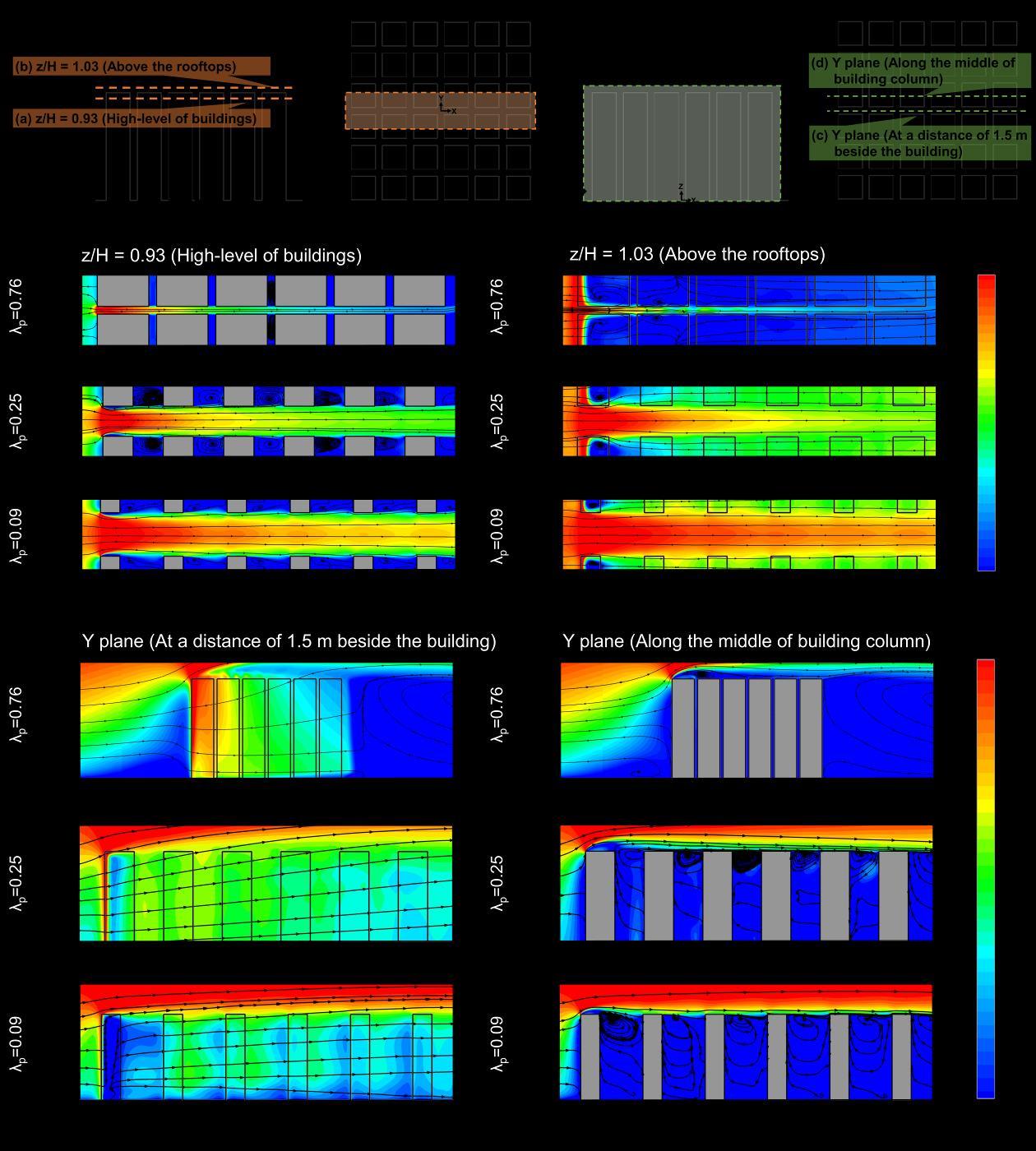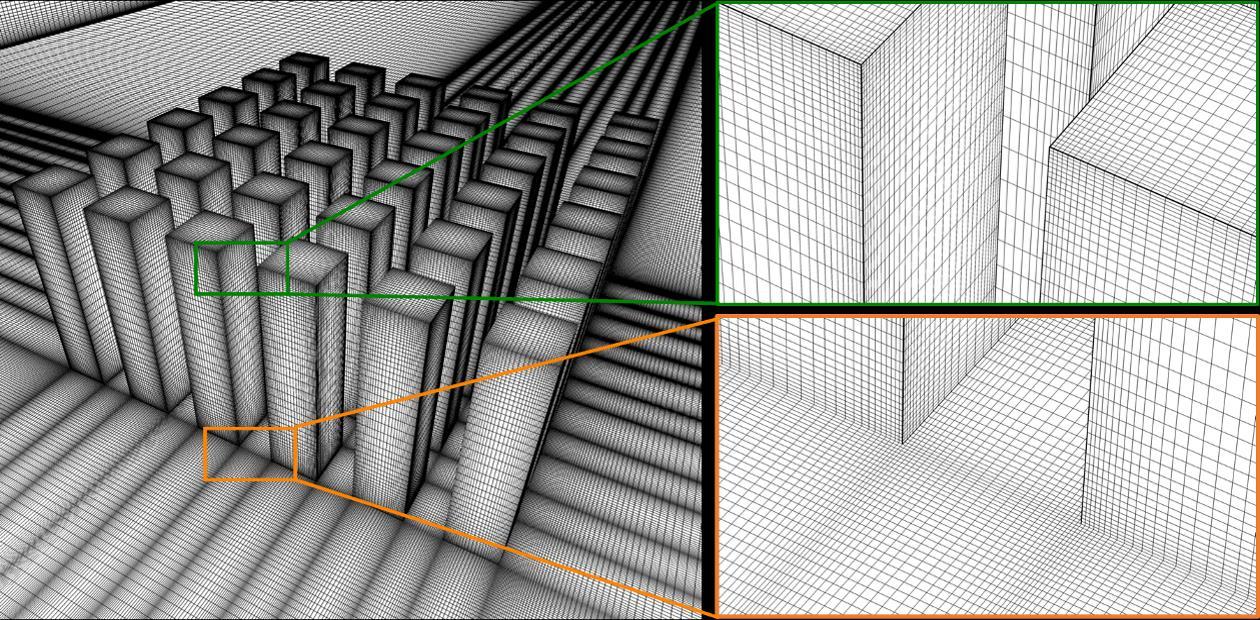
3 minute read
4.5 Discussion
Urban wind energy potential: Impacts of urban density and layout 91
Figure 4.17. Predicted contour plots of dimensionless power density (with unacceptable turbulence region marked in white color) over horizontal x-y planes at (a) z/H= 0.93 and (b) 1.03 with wind direction of 45° for sharp/round corners and urban layouts of λp = 0.09, 0.25, 0.76.
Advertisement
As the world strives to develop the sustainable purposes of combating against climate change and providing renewable energy sources for all, it is crucial to investigate the feasibility and environmental effects of urban wind energy during their developmental stages. By 2050 it's projected that more than two-thirds of the world population will live in cities with denser and more compact urban layouts [155]. Hence, compact city planning has recently attracted much attention as one of the measures for sustainable urban development. As exponential growth of
92 Chapter 4
high-rise buildings combined with mass urbanization, the high-rise urban areas as the future trend still lack the knowledge-based expert technique for the preliminary estimation of urban wind power potential at promising locations for turbine installation. To attain a better understanding of the innovative development strategies of urban morphology for enhancing wind energy harvesting, this study complements the urban wind researches by filling the gap between research, development, and implementation, especially in compact high-rise urban areas. The obtained results can be a useful reference when contemplating the incorporation of wind energy exploitation into reality to generate the real application not only for urban development but also for practice guide of building designs. It is not just a matter of improving renewable wind energy and mitigating climate change with better urban ventilation. Meanwhile, the COVID-19 pandemic has emerged and forced humanity to pursue the path of energy sustainability in the post-COVID world. According to Elavarasan et al. [156] finding the significance of strategy immediately during this difficult time (see Section Journey towards SDG-7 in the post-COVID world in Ref. 63), they have concluded that increasing the preferences to install the solar and wind energy-based projects is one of priority measures highlighting the energy sustainability vision for progressing towards sustainable development goals, as defined by the United Nations. This investigation primarily applies different design strategies of urban morphologies to improve the urban wind energy potential in generic compact high-rise urban areas to put forward the future essential policy recommendations to the energy sector and the government for starting urban wind renewable development and driving the energy transition. Furthermore, the scope of this study aims to provide a numerical assessment of urban wind power in the vicinity of the possible turbine installation areas to facilitate the related researchers, engineers, policymakers, and investors in the future development of appropriate wind turbine installation strategies.
The limitations of this study are illustrated as follows: (1) This study considers the scenario of an array of uniform-height high-rise buildings as the most generic urban morphology. The impacts of non-uniform building height or unequal building arrangements (i.e., unequal street canyon widths) on wind energy harvesting are not yet taken into account. (2) This study primarily performs the analyses using the regular cuboid of high-rise buildings. The aspect ratios of cuboids will be varied to better select the most suitable building corner modifications in further investigations. (3) Steady-state CFD simulations are conducted at a fixed wind direction. Any possible airflow unsteadiness and variations in the intermittency and variability of wind speed and direction are not considered in detail. (4) Other determinants are strongly bearing on the urban wind environments, such as air quality, air pollutant dispersion, wind energy potential, heat island effect, which can be thoroughly examined for sustainable urban development. Hence, the effects of solar radiation, thermal buoyancy, and diurnal temperature in urban canyons on the wind field around generic high-rise building arrays are ignored in this study. (5) Before delving into the investigations of urban wind turbine installation, the selection of mounting locations and types of wind turbines must be identified first. Therefore, the size, number, layout, placement, capacity, performance, and expected maintenance of wind turbines are not taken into account during this stage of wind energy assessment.
To address the above limitations for completing a comprehensive understanding of the outdoor wind environments in compact high-rise urban areas on enhancing urban wind energy






